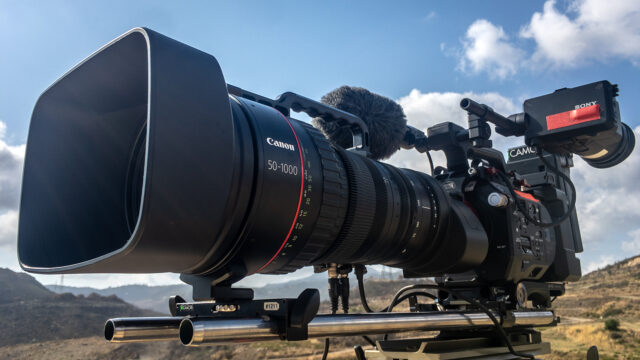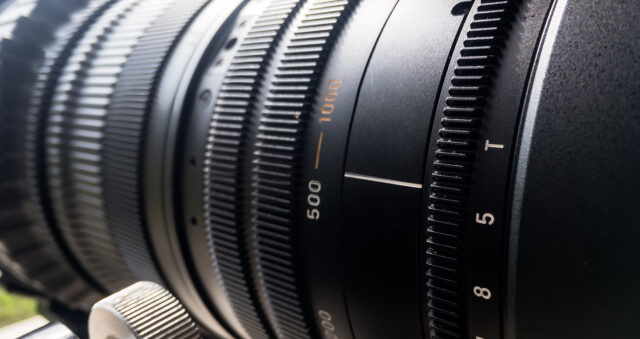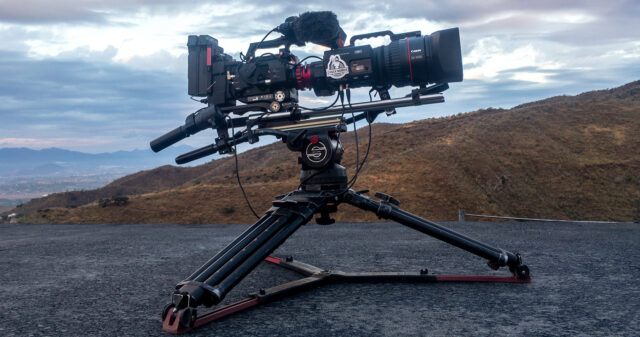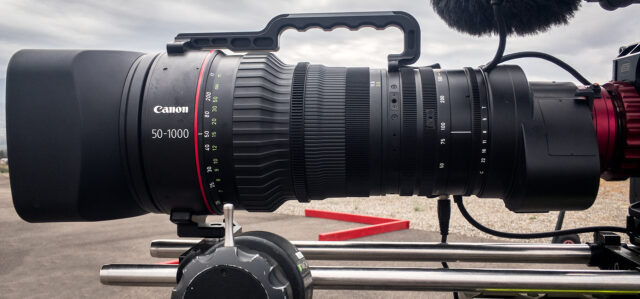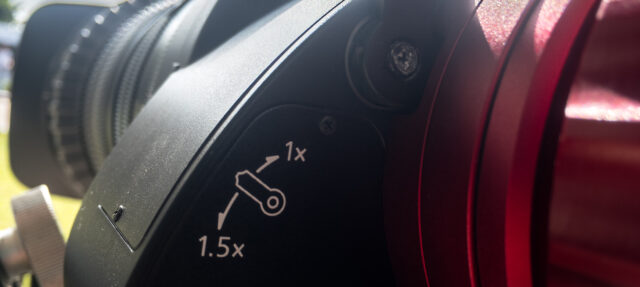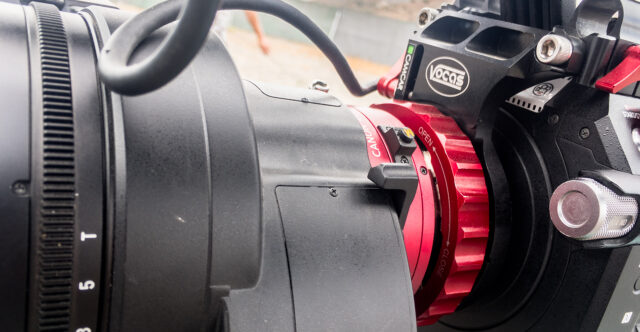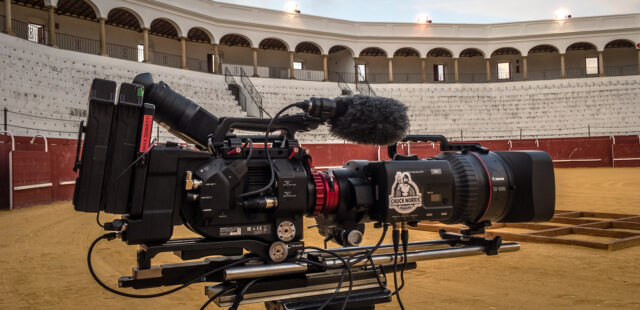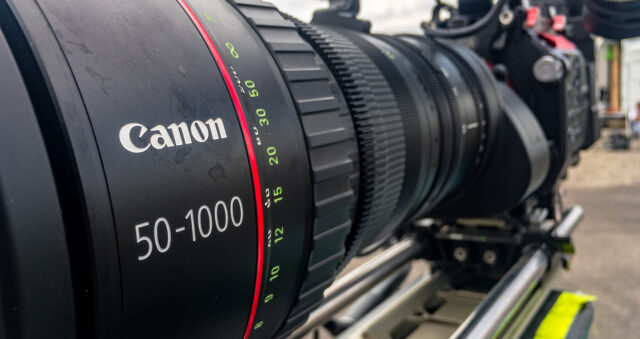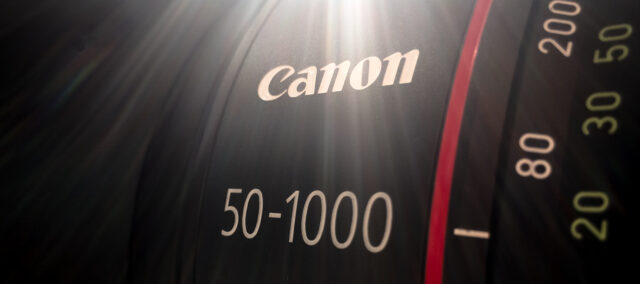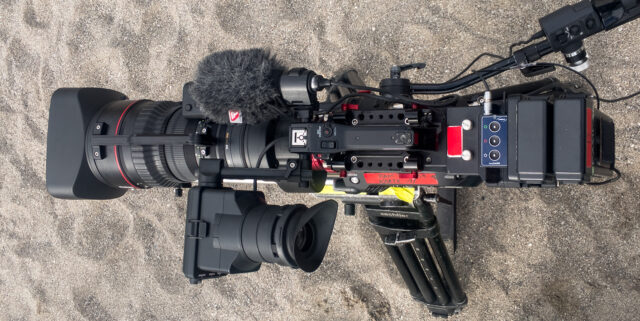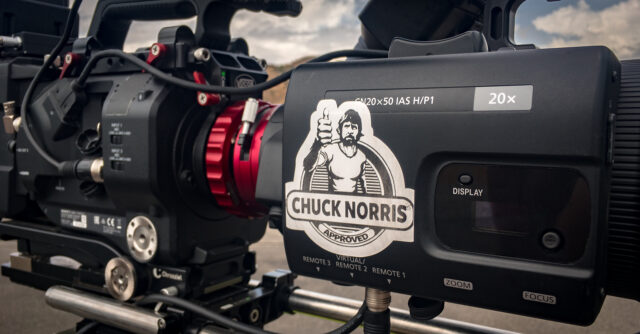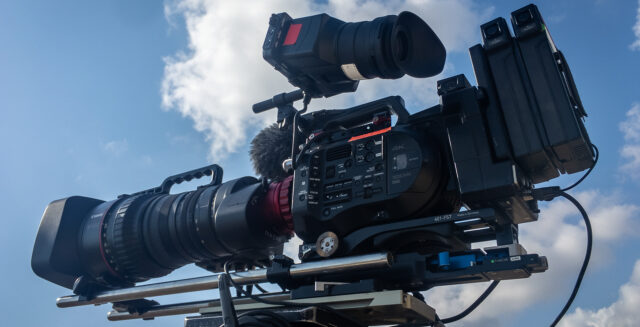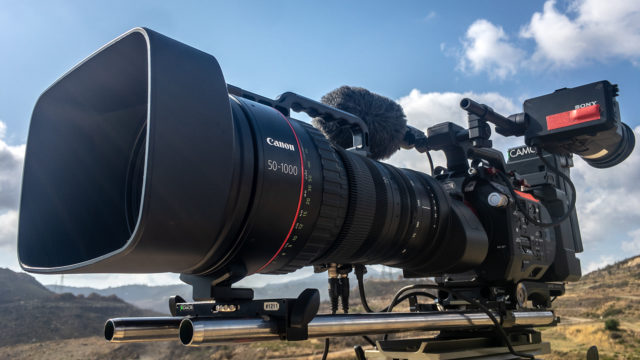
In September 2018 I had the rare chance of working with a beast of a lens: The Canon 50-1000mm cine servo lens for s35 sensors. It’s huge, it’s expensive and it is quite heavy but for the provided focal range and overall performance it’s actually quite compact! This is my personal review of this impressive cine zoom lens.
The Canon 50-1000mm is a strange lens. The story goes that one Ivo Nörenberg approached Canon with his idea of the perfect wildlife zoom lens which offers a vast focal range in a compact and somewhat lightweight design. Canon accepted the challenge and the 50-1000mm cine servo was the result. With a length of 15.9″ (40,4 cm) and a weight of 14.6 lbs (6,6 kg), this zoom lens is quite compact for what it has to offer: a 20:1 zoom range, servo motors for zoom, iris and focus plus a 1.5x extender. All this makes this lens a potential one stop shop for all your wildlife/nature needs.
In our case, this lens allowed us to replace a traditional 2/3″ broadcast camera in favor of a camera with a more cinematic s35 sensor, namely the Sony FS7. In 16:9 mode a 23,087mm x 12,970mm (26,481mm image circle) sensor area needed to be covered which isn’t a problem for the 31,4mm image circle produced by the Canon 50-1000mm lens.
Canon 50-1000mm Cine Servo Lens
For our production in beautiful Andalusia in southern Spain, we deployed several Sony FS7 Mark II cameras, all equipped with prime lenses. A lot of Canon L glass, as well as several Sigma Art lenses, were used. The variable ND filter of the Mark II was perfect in order to get that gorgeous shallow depth of field shots we were after.
For the Canon 50-1000mm, we chose to pair it with an FS7 Mark I and leave the lens attached to it at all times. Setting up this camera package with all the support, zoom handle and remote focus wheel did take quite a long time so it was easier to just let it live in one giant flight case for the whole production. The variable ND filter wasn’t necessary because this lens produces a nice shallow depth of field as soon as you get to a certain focal length anyways.
Carrying the camera around was a two-person job but once it was set up a single operator could handle everything, just like with a ‘normal’ ENG camera. A close-up shot of a subject could be easily achieved from 35m away with the lens set to 1000mm (FS7 s35 sensor, 16:9/1.78). Sometimes we had to place the Canon/FS7 combo pretty far away on top of a nearby hill in order to get some shots without interfering with the other cameras.
Performance of the Canon 50-1000mm
Working with this lens requires some practice. Even the slightest shake will be fairly visible when working with such a long focal length. A decent tripod is mandatory and our Sachtler Cine 2000 legs along with a Studio 9+9 fluid head did a vey good job. Furthermore, nailing focus is quite a challenge! Trying to find the focal plane at all while operating the lens set to 1000mm is hard… but keeping a moving subject in focus really requires some ZEN-like abilities!
The lens offers a T5.0 – F8.9 iris which is not perfect but quite impressive for such a compact lens. Due to the fact that the iris is not T5.0 throughout the whole zoom range, you’ll notice a pretty strong f-drop when zooming in. This can be avoided by setting the iris to T8 or even T11 in the first place. T8 might sound not very cinematic but since we’re talking about gigantic focal lengths here, I can guarantee you a shallow depth of field even when stopping down to a T11. That’s why the regular ND filter wheel of the FS7 Mark I was just fine. No need for the variable ND of the Mark II in order to maintain a certain (wide open) iris.
It’s a parfocal lens which means that the lens maintains focus throughout the whole zoom range. This is particularly nice since you can use this feature to set focus on a subject at 1000mm and then zoom out for your desired framing without losing focus. However, the minimum focussing distance is 138″ (3,5m) which underlines the purpose of this lens once again: long distance coverage!
For when you really need that extra oomph, the lens offers a 1.5x extender. This transforms the already impressive 1000mm focal length into an even more impressive 1500mm. Of course, the short 50mm end of the focal range also becomes a 75mm then.
The lens handles optical aberrations very well and it delivers really nice image quality across the frame (including the edges). To me, this lens offers beautiful 4K optical imaging performance throughout the zoom range, even with the 1,5x extender engaged.
Mounting the Lens
The flange back can be adjusted which is a very useful feature when using this lens with different camera systems and therefore with different flange focal distances. This is a well-known feature of broadcast lenses and it’s nice to see this on the Canon 50-1000mm lens, too.
It comes with your choice of an EF or PL mount. The mount is exchangeable through a certified Canon service facility. We used a PL mount version along with a Vocas E-Mount to PL adapter in order to mount the lens on the FS7 camera. Speaking of mounting the lens: You really need some heavy duty 19mm rods in order to support this lens properly and avoid severe damage to your camera. The Sony FS7 is not exactly designed to support such a heavy lens and its lens mount chassis will break, no question about it. The Vocas adapter itself is supported by a top mount plate.
Working with Servos
The Canon 50-1000mm sports an ENG-style motor box on the side of the lens. Three servos are built right in: Zoom, iris, and focus. I used external controls for both focus and zoom while operating the iris manually.
A zoom servo handle is really mandatory if smooth zooms are required since the zoom rocker on the lens itself is really hard to reach when working from a tripod. A remote focus wheel also helps to maintain focus without reaching for the rather large focus barrel of the lens. By the way, the focus barrel offers hard stops and 180° degrees of rotation. Each servo can be switched to manual operation.
The whole motor unit is detachable if you prefer working with a third party (wireless) focus system. Both 0.5 and 0.8 pitched gear rings are in place. Zoom and iris rings feature a 0.5 gear only.
Since the lens requires external power for the servos when using it with the FS7, a standard broadcast 12-Pin camera interface cable runs between the lens and the Hirose connector of the FS7 extension unit. That connection also allows for triggering the camera. So I could use the start/stop button of the zoom handle to start/stop the camera.
Specifications
Here’s a full list of specifications for this lens:
Model Name: CN20x50 IAS H/P1 or CN20x50 IAS H/E1
Mount Type: PL / EF
Zoom Ratio: 20x
Focal Length Range:
- 50-1000mm
- 75-1500mm (With 1.5x Extender)
Maximum Aperture:
- T5.0 at 50-560mm
- T8.9 at 1000mm
- T7.5 at 75-840mm (With 1.5x Extender)
- T13.35 at 1500mm (With 1.5x Extender)
Iris Blade: 11
Angle of View (Aspect Ratio 1.78:1 Dimensions 24.6×13.8mm):
- 27.6° x 15.7° at 50mm
- 1.4° x 0.8° at 1000mm
- 18.6° x 10.5° at 75mm (With 1.5x Extender)
- 0.9° x 0.5° at 1500mm (With 1.5x Extender)
Angle of View (Aspect ratio 1.9:1 Dimensions 26.2×13.8mm):
- 29.4° x 15.7° at 50mm
- 1.5° x 0.8° at 1000mm
- 19.8° x 10.5° at 75mm (With 1.5x Extender)
- 1.0° x 0.5° at 1500mm (With 1.5x Extender)
MOD(from Image Plane): 3.5m / 11.5′
Object Dimensions at MOD (Aspect Ratio 1.78:1 Dimensions 24.6×13.8mm):
- 139.3 x 78.1cm at 50mm
- 7.3 x 4.1cm at 1000mm
- 92.9 x 52.1cm at 75mm (With 1.5x Extender)
- 4.9 x 2.7cm at 1500mm (With 1.5x Extender)
Aspect Ratio 1.9:1 Dimensions 26.2×13.8mm
- 148.3 x 78.1cm at 50mm
- 7.8 x 4.1cm at 1000mm
- 98.9 x 52.1cm at 75mm (With 1.5x Extender)
- 5.2 x 2.7cm at 1500mm (With 1.5x Extender)
Pitch of Focus / Zoom / Iris Gear:
- Focus: 0.8/0.5
- Zoom: 0.5
- Iris: 0.5
Front Diameter: 136mm
Dimensions (W x H x L): 6.89 x 6.72 x 16.27 in. (175.0 x 170.6 x 413.2mm)
Approx. Mass: 14.55lbs (6.6kg)
Some Downsides
Because Canon has designed this lens to be as compact as possible, there have to be some downsides. It’s always about balancing features against some side effects since there’s no such a thing as the perfect lens, unfortunately. In regards of this Canon 50-1000mm cine zoom lens, the most visible downside is its focus breathing. When changing focus between subjects while shooting on a –say– 850mm, focus breathing becomes quite distinctive.
Focus breathing results in a change of the field of view just as if you were zooming while pulling focus. In order to prevent this a much more complex internal lens design would be necessary which in return would result in a lens much larger and bulkier than this Canon one. It’s clearly all about the focal range here and the resulting focus breathing is a necessary compromise.
Furthermore, this lens does not offer any kind of image stabilization. This would have been nice, given the massive focal length, but –again– would have led to a much bulkier lens overall. Sure, this lens is not exactly lightweight but for its performance, it actually is a really compact and, yes, lightweight piece of gear.
Lastly, the lens is really expensive. It costs about 10 times as much as the Sony FS7 camera which we used with it. it really felt a bit like mounting the camera to the lens and not the other way around.
Conclusion
It was really fun to work with this beast of a lens. It requires some practice but once you are familiar with it it just works. The focal range and optical performance are really impressive. A razor-sharp close-up from 50m away? Not a problem.
It’s certainly not a lens for run and gun style projects but it really offers quite an impressive set of features without too many compromises. The focus breathing is not perfect but it really wouldn’t have been possible to have both, a 20x zoom range and a decently sized lens without making some compromises.
Usually I’m not a big fan of zoom lenses and I prefer working with fast prime ones. But this Canon 50-1000mm monster zoom lens was really fun to work with. I never had any issues with it (other than the sheer size of the whole camera package) and I don’t know if we could have accomplished some of the shots with any other lens. Sure, it’s a lens for special purposes but it’s nice to have the choice of using such a lens and still being able to use it like any other lens. Very nice!
links: Canon
Do you think you’ll ever need such a lens? If yes, what are your thoughts about using an S35 lens rather than a ‘standard’ ENG setup? Let us know in the comments below!
